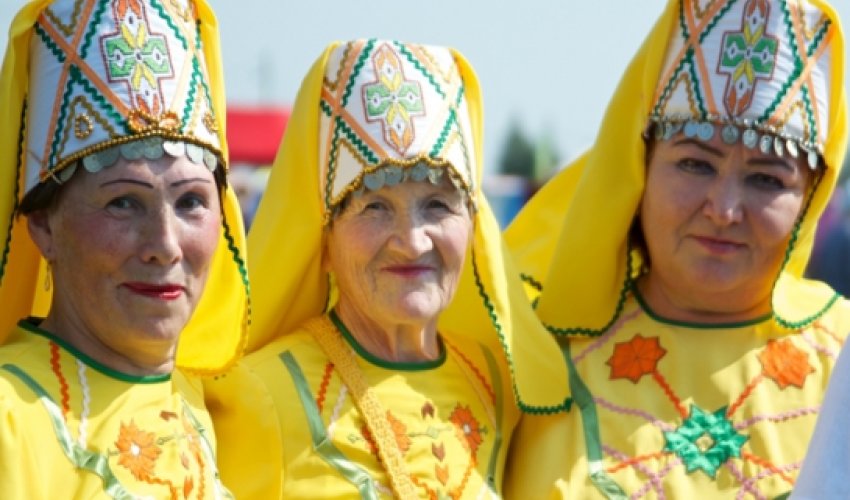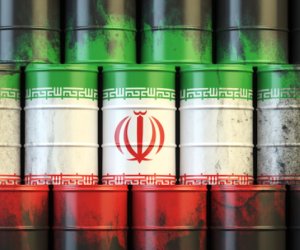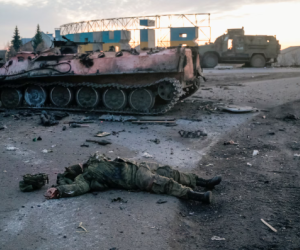The people with the reddest hair in the world

By Mark Stratton
(BBC) - Russia is home to people from at least 190 ethnic groups and counts more than 20 different republics within its borders. With Moscow seemingly pursuing an aggressively nationalistic agenda, I wondered what life is like for ethnic minorities there.
The Udmurts are said to possess the reddest hair in the world.
The Tatars and Bashkirs descend from the Golden Horde.
The Mari worship animist spirits amid their sacred forest groves.
The connection between these different ethnicities is that they all have their own republics inside the Russian Federation.
I travelled 500 miles (750km) east of Moscow to the Middle Volga lowlands, where six of these republics cluster together to see how they are run.
They have their own parliaments to deal with local issues but their governors are appointed by Russia's president to ensure they're subordinate to Moscow in national matters.
None of the republics I visit - Chuvashia, Mari El, Tatarstan, Udmurtia, Mordovia, and Bashkortostan - are exactly new to Russian integration.
Back in the 1550s when Tsarist Russia was at war with the marauding Tatars, Ivan the Terrible constructed a line of defensive forts along the Volga through the lands of these minority peoples.
Pragmatically, they sought protection within the Russian Empire - and, indeed, backed the winning horse because Ivan lived up to his terrible sobriquet and forcibly subjugated the Tatars in Imperial Russia.
"Joining Russia was a matter of preservation of our culture rather than colonisation," insists Tamara Vorobeyeva, my Chuvashian guide in their republic's capital, Cheboksary.
Yet while a majority of citizens of Chuvashia claim Chuvashian descent, Vorobeyeva concedes that centuries of mixing with Russians and Tatars make it difficult to define how a typical Chuvashian looks.
Nonetheless, she says, Chuvashian culture has undergone a revival since the Soviet Union's demise - Chuvash is now taught alongside Russian in schools and streets signs are written in both languages.
"We're very happy inside Russia and have never felt discriminated against," she says.
"Some extreme elements want a deeper cultural revival and have proposed Chuvash as the republic's sole official language. But this would force our ethnic Russians out and that would be an economic disaster," she adds.
The neighbouring republic of Mari El is just 60 miles (90km) away amid thick pine forests. The Mari migrated here in the 6th Century from the Urals and their language approximates to Finnish.
Mari El has a majority of ethnic Russians and once again I was told it's impossible to define a typical Mari look with any certainty because of centuries of intermarriage.
I had read reports claiming Mari culture was under attack but local English tutor, Svetlana Maimina, insists all citizens of Mari El live harmoniously together.
"My heritage is Jewish," she tells me. "We don't have a synagogue here but I've never experienced a day of anti-Semitism in my life."
Over the centuries many indigenous peoples across these republics have undergone a conversion away from traditional folk religions to Orthodox Christianity.
Yet in Yoshkar-Ola, at Mari El's national museum, Nastia Aiguzina says the Mari still practice folk worship. "Every rural village has a shaman. We go to the sacred birch groves to feast and offer animal sacrifices to the spirits in the trees," she says.
I wondered if the Russian Orthodox Church frowned upon this? "No," she insists. "We hold both beliefs. In the morning people might attend church and in the afternoon visit the sacred forests."
Perhaps the strongest cultural identity I encountered was the Muslim Tatars who make up just over 50% of Tatarstan.
The Tatars arrived here in the 13th Century as part of the Mongol Golden Horde before their unprofitable conflict with Ivan the Terrible three centuries later.
Nowadays Tatarstan's capital, Kazan, is a modern progressive city rich from oil wealth. Ivan's 16th Century hilltop Kremlin still dominates Kazan - a university lecturer, Rezida Muhametzanova, showed me around it.
Since communism ended, two dazzlingly ornate places of worship have been rebuilt there - the Qolsharif Mosque and the Cathedral of Annunciation, barely 100 metres apart.
"They were reconstructed simultaneously by our governor to show even-handedness dealing with different faiths," says Muhametzanova.
"All religious persuasions live peacefully alongside each other and we have no culture of radicalism. I am a Muslim woman but not required to wear hijab," she says.
I later encounter the Mordvins of Mordovia, the oil-rich Bashkirs of Bashkortostan and the Udmurts - all cultures heavily assimilated into the Russian way of life. And yes, some Udmurts really do boast a shock of bright red hair.
Ethnic and religious harmony haven't always reigned in Russia's myriad republics. Think of Chechnya. But in the lands of the Middle Volga, it seems their diverse cultural casserole has simmered away for centuries without ever boiling over.
Latest news 
More news 



































 Photo
Photo 



 Video
Video 

